Consumer Credit 7.0% Increase Driven By Student Loans for ...
The Federal Reserve's consumer credit report for November 2012 shows a 7.0% annualized monthly increase in consumer credit, once again driven by student loans. Revolving credit increased by 1.1%, and non-revolving credit jumped another 9.6%. October showed consumer credit increasing by a 6.2% annualized rate.
?
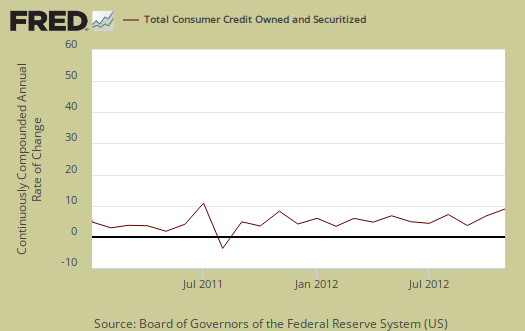
?
Revolving credit are things like credit cards and non-revolving are things like auto loans and student loans. Mortgages, home equity loans and other loans associated with real estate are not included in this report.
Overall consumer credit increased $16.1 billion dollars to $2,768.5 billion, seasonally adjusted. Revolving credit increased by $800 million while non-revolving increased $15.2 billion from October.
The report gives percent changes in simple annualized rates, also known as a continuously compounded annualized rate of change. Consumer credit contractions correlate to recessions. The consumer credit report does not include charge offs and delinquencies. Credit card charge-offs were 3.90% in November and the delinquency rate for Q3 is at an 18 year low, 2.75%.
Graphed below is total consumer credit.
?
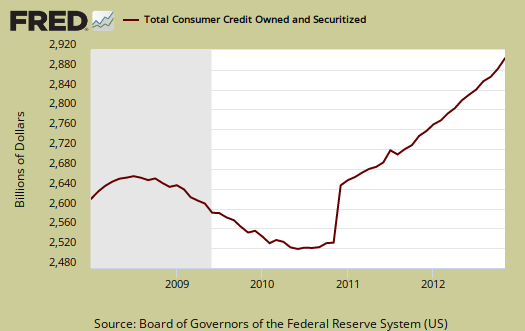
?
Student loans continue to soar. Federal government non-revolving consumer credit includes loans originated by the Department of Education under the Federal Direct Loan Program, as well as Federal Family Education Program loans that the government purchased from depository institutions and finance companies. In other words, Federal government non-resolving credit is student loans. This month student loans increased another $4.9 billion to $521.3 billion, not seasonally adjusted. When removing student loans from the not seasonally adjusted data, we have a consumer credit increase of $3.0 billion by institution type. This implies auto loans also increased.
The federal government started making 100% of guaranteed student loans in July 2010. People went more into debt, clearly, to pay for the soaring, absurdly high, educational costs. Below is the not seasonally adjusted ballooning non-revolving credit held by the Federal Government, i.e. student loans.
?
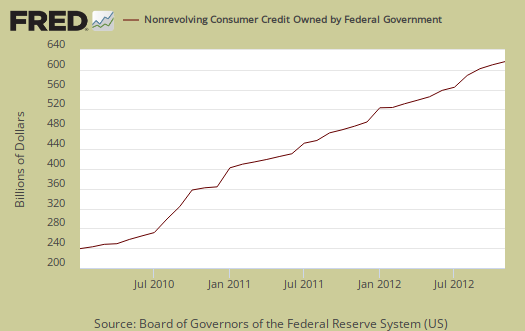
?
Below is non-revolving credit, seasonally adjusted, annualized percentage change.
?
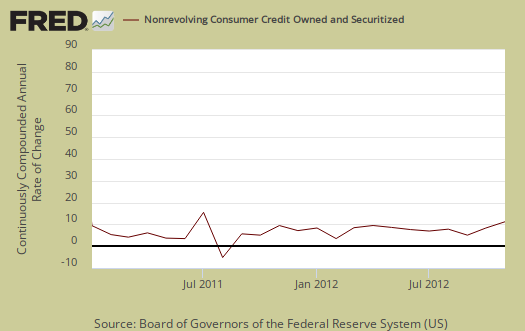
?
Revolving credit, which is mainly credit cards, has increased for the second month in a row as October's revolving consumer credit increase was 4.8%. Charge offs are not included in this report. Interest rates for credit cards with a balance was 12.81% in November. Think about that and how the Federal Funds effective rate is essentially zero.
?

?
The New York Fed released their Q3 report for consumer and household debt where they show a dramatic increase in student loan delinquency rates. From their report for Q3:
Non-mortgage household debt balances jumped by 2.3% in the third quarter to $2.7 trillion, boosted by increases of $18 billion in auto loans, $42 billion in student loans, and $2 billion in credit card balances.
Below is the monthly revolving consumer credit annualized percentage change.
?
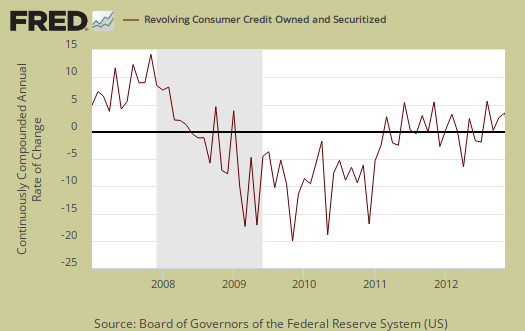
?
Now below is the pools of securitized assets, which had no change and is $58.1 billion. The Fed describes this category as:
Outstanding balances of pools upon which securities have been issued; these balances are no longer carried on the balance sheets of the loan originators. The shift of consumer credit from pools of securitized assets to other categories is largely due to financial institutions' implementation of the FAS 166/167 accounting rules.
They are off-balance-sheet securitized assets originated by all major holders.
?
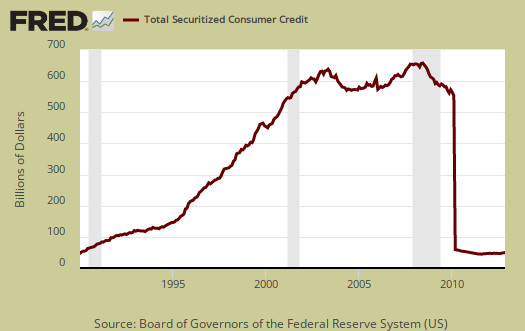
?
Below is commercial banks revolving credit.
?
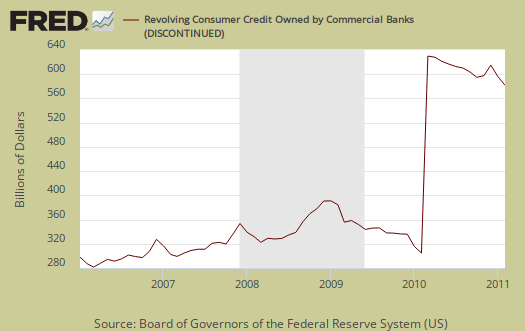
?
Below is revolving credit by finance companies.
?
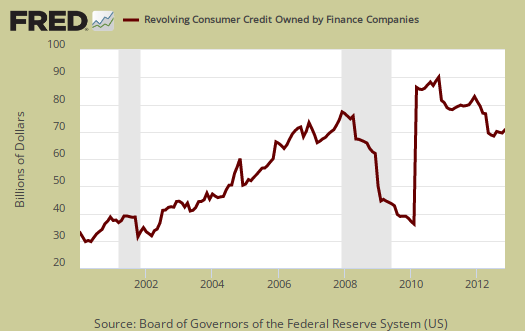
?
Those 2010 "cliffs" on pools of assets and commercial banks graphs were the off the corporate books derivatives. They were brought back onto the liabilities book, via FSAB accounting rules changes in 2010.
Those in the press like to characterize debt as an increase in consumer spending and thus good for the economy. We somehow doubt crushing student loan debt has a stimulative effect to consumer spending or the economy. Every month we see student loan debt just piling up and this month is no exception.
best buy black friday deals breaking dawn part 2 breaking dawn part 2 Jennifer Lacy Honey Baked Ham hostess israel

0 Comments:
Post a Comment
Subscribe to Post Comments [Atom]
<< Home